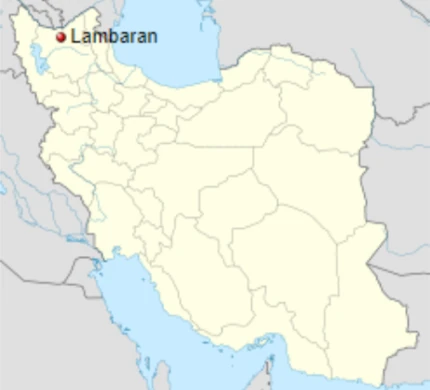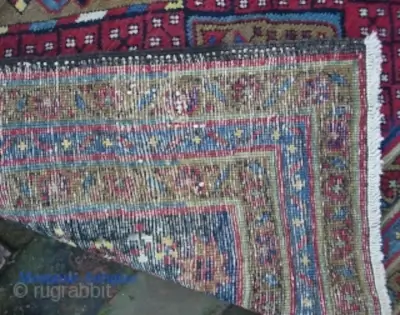Lamberan Rugs

Lambaran is a village in Sina Rural District,
in the Central District of Varzaqan County,
East Azerbaijan Province, Iran. It may also be
Romanized as Lanbaran and Lombaran.
Headwaters of Ahar-Chay (Ahar-River) start
here in Lamberan.
Traditionally, Lamberan belongs to Karaja
(also Romanized Qarājeh, Karadja or
Gharaja) weaving area. Karaja rugs may be
categorized as Heriz which is a distinctive
rug weaving center with world reputation but
Karaja rugs don’t have much in common with
typical Herizes except in quality of raw
materials. Karaja rugs share this unique
property with other Herizes, but in other
aspects these pieces have their very own
style, technically and aesthetically.
Technical aspects and the structure of Lamberan Rugs


Lamberan rugs are single-wefted. Knots are
symmetrical (Turkish), pile is woolen and
warp and weft are cotton. Completely woolen
pieces are also available. Selvages are flat,
similar to other Azerbaijan’s pieces. Knot
count reaches to the average of 100 knots in
inch in Karaja but Lamberan pieces are
coarser than the average. Lots of standard
sizes are made but long and narrow pieces are
favored.
Dyeing and painting of Lamberan rugs


Madder red is dominant on Lamberan palette.
Azerbaijan’s nature provides a special kind
of madder which brings several shades of red
on palettes. Dark blue and cream are also
used for grounds but such pieces are rare.
Rose and brownish shades of red are also
used for patterns as well as light blue and
pistachio green.
Designs and patterns of the Lamberan rugs
Lamberan rugs are designed with a three-
medallioned structure, appropriate for narrow
pieces which are very common in the region.
Lamberan medallions are hexagonal and
hooked. This sort of medallions are actually
well-known as “Karaja frames”. A bigger
one, usually with a different color, is located
in the middle, and the two smaller ones hang
upward and downward.


